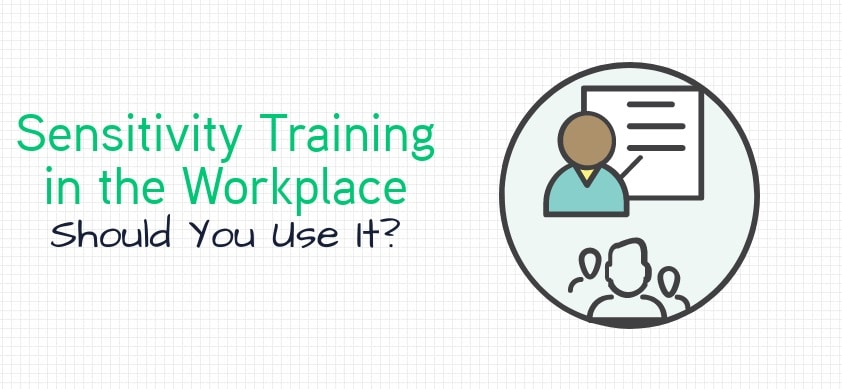
Sensitivity Training in the Workplace – Should You Use It?
Workplace sensitivity training is about ensuring all employees, customers, and other stakeholders are treated with equal respect in their dealings with your business. While some may imagine sitting in a meeting room, watching a PowerPoint presentation, or performing role plays, effective sensitivity training is so much more than that.
The goals of sensitivity training
German-American social psychologist, Kurt Lewin, is regarded as the pioneer of sensitivity training in the 1940’s. The Lewin Center notes that his thinking was moving away from more abstract psychology “to emphasize social psychological problems”. He is well known for his work on group dynamics, attempting to understand what makes a team function and the interplay between different teams.
Another American sociologist, Kurt Back, noted that sensitivity training was “a mechanism to help reintegrate the individual into the whole society through group development”. The aim of a training session is guiding the team through revealing their own unique perceptions about the world around them, with the trainer acting as a facilitator rather than a leader. Feedback is one of the most critical parts of the process. As conflicts or incidents occur in the discussion, the trainer facilitates conversation between participants to reach a mutual understanding.
In the workplace, these exchanges can improve group dynamics which can also boost productivity, morale, and satisfaction with the business as an employer. Fostering respect in the workplace is also an important responsibility for the business as part of the duty of care to create a safe work environment for all employees.
Case studies in sensitivity training
It is easy to not take sensitivity training seriously, or treat is as a short-term boost of awareness without long-term benefit. Some even see it is an exercise in political correctness, or trying to force people to comply with the attitudes of the business. However, a number of empirical studies have found it to be effective, particularly in cultivating better cultural awareness.
One 1999 study published in the Medical Education journal provided 15 hours of sensitivity training to medical students before they commenced their residency in a hospital. The results found they became more emotionally resilient, embraced change more readily, coped better with stressful situations, and learnt better from mistakes.
The study also found the training to be effective in encouraging people to critically analyse their own preconceived ideas and read verbal and non-verbal cues more closely.
Providing sensitivity training can go wrong and the business needs to be prepared for that. In 2000, the US Environmental Protection Agency ordered all Washington-based employees to attend a series of sensitivity seminars. It was touted as a way to “create understanding, sensitivity and awareness of diversity issues”. Ultimately, the plan backfired. Employees complained the course materials were condescending and one-sided. This pushback can move some attitudes in the opposite direction to the course intentions.
Implementing sensitivity training in the workplace
Critically, sensitivity training cannot exist in a vacuum. It needs to be part of the broader workplace culture of ethics, respect, and anti-discrimination policies. The company and managers need to embrace the principles of the training and allow them to become part of the culture of the business. This means having open lines of feedback from employees on current policies, regularly reinforcing the spirit of the training in the day-to-day business activities and having clear avenues for employees to express concerns about breaches.
Is sensitivity training hurting or helping? The short answer is, both. Bernie Smith of the Federal Facilitators Group of Falls Church in the US says that companies wanting to employ third-party trainers need to do so carefully. The business should ensure that training is specifically tailored to the business and avoid generic materials that are often quickly dismissed. Address resistance from employees openly and highlight how the training is linked to practical workplace policies and procedures.
Providing equal, respectful treatment in the workplace begins at the point of recruitment and onboarding new employees, and continues beyond the life of their tenure.